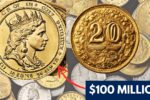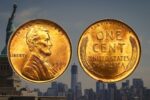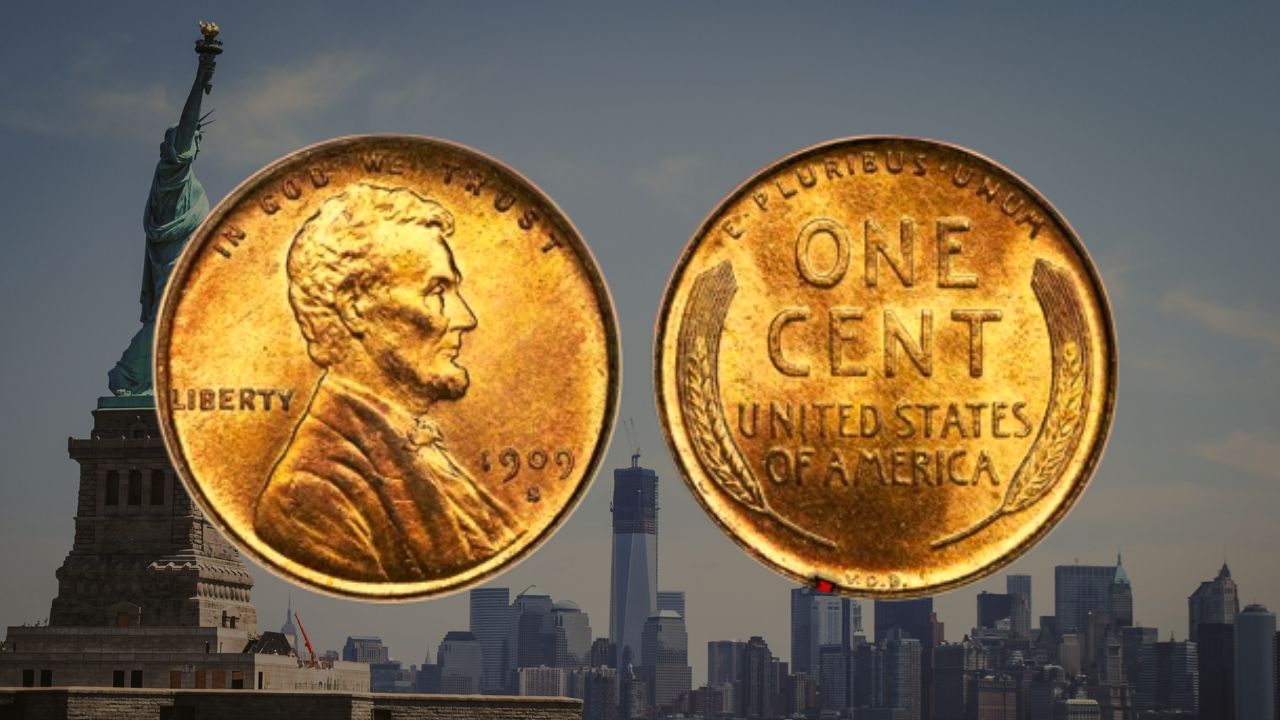In the fascinating world of coin collecting, certain coins transcend their humble origins to capture the imagination of collectors and enthusiasts alike. These rare pieces are more than just currency; they are miniature windows into history, rich with stories and historical significance.
Among the most legendary of these coins is the Lincoln Wheat Penny—a cent that has sparked countless tales of hidden fortunes and improbable values.
Could a Lincoln Wheat Penny really be worth $2.3 billion? Let’s dive into the history, variants, and mystique surrounding this beloved coin and others like it.
The Lincoln Wheat Penny: A Cornerstone of U.S. Coinage
Introduced in 1909 to commemorate Abraham Lincoln’s 100th birthday, the Lincoln Wheat Penny is one of the most iconic coins in American history.
Designed by Victor David Brenner, its obverse features a portrait of Lincoln—the first U.S. president to be depicted on a circulating coin—while its reverse showcases two wheat stalks symbolizing America’s agricultural heritage.
This design remained in circulation until 1958, when it was replaced by the Lincoln Memorial reverse.
Why the Hype Around the Lincoln Wheat Penny?
The intrigue surrounding the Lincoln Wheat Penny comes from its combination of historical significance, design elegance, and the discovery of rare and valuable variants.
Some of these pennies have fetched astronomical sums at auctions, largely due to errors, mint marks, and limited production.
1. The 1943 Copper Penny
One of the most famous and valuable error coins in U.S. history is the 1943 Copper Penny. During World War II, the U.S. Mint switched to zinc-coated steel planchets to save copper for wartime use.
However, a small number of pennies were accidentally struck on leftover copper planchets. With only 20-30 examples known to exist, this penny has sold for over $1 million in pristine condition.
2. The 1909-S VDB Penny
This coin is notable for its rarity and the controversy surrounding Brenner’s initials (VDB) on the reverse.
The San Francisco Mint produced only 484,000 of these pennies before removing the initials, making it a must-have for collectors. Prices for a high-grade 1909-S VDB can exceed $50,000.
3. The 1922 “No D” Penny
This variant emerged when the Denver Mint struck pennies without its characteristic “D” mint mark. While not an intentional error, the “No D” pennies are rare and highly sought after, with high-grade examples fetching thousands of dollars.
Is the $2.3 Billion Claim Real?
The idea of a Lincoln Wheat Penny valued at $2.3 billion may seem outlandish, and it’s important to separate fact from fiction.
While no single penny has ever approached this astronomical value, the claim likely stems from urban legends or exaggerated reports.
High-grade Lincoln Wheat Pennies can command significant prices, particularly rare variants like the 1943 Copper Penny or 1909-S VDB. However, these values rarely exceed several hundred thousand to a few million dollars.
The $2.3 billion figure likely reflects the cumulative worth of all Lincoln Wheat Pennies still in circulation or in collections worldwide.
Other Rare Coins That Capture the Imagination
The Lincoln Wheat Penny isn’t the only U.S. coin steeped in mystery and value. Here’s a look at some other remarkable coins:
The 1946 Roosevelt Dime
Introduced after Franklin D. Roosevelt’s death, this coin was a tribute to his leadership during the Great Depression and World War II, as well as his role in the March of Dimes campaign.
While the dime is not as rare as some other coins, early production issues led to the loss of many coins, creating unexpected scarcity.
High-grade examples can fetch impressive prices, making this dime a favorite among collectors.
The 1971 Eisenhower Dime
Unlike the widely circulated Eisenhower Dollar, the 1971 Eisenhower Dime is a rare prototype or test piece. Believed to have been produced in extremely limited quantities, this coin remains a mystery.
Only a handful of examples are known to exist, making it a centerpiece for collectors fortunate enough to acquire it.
The 1976 Bicentennial Quarter
Minted to celebrate America’s 200th birthday, the 1976 Bicentennial Quarter features a unique design of a colonial drummer surrounded by 13 stars.
Most of these quarters are worth face value, but rare minting errors or high-grade silver proofs can fetch hundreds or even thousands of dollars.
Why Are These Coins So Valuable?
Several factors drive the extraordinary value of rare coins:
- Rarity: Coins produced in limited quantities or with significant minting errors are often highly valuable.
- Historical Significance: Coins tied to major events or influential figures carry intrinsic appeal.
- Condition: Well-preserved coins in uncirculated or near-mint condition fetch the highest prices.
- Certification: Professional grading services like PCGS and NGC provide authentication and grade coins, increasing buyer confidence and market value.
Tips for Aspiring Collectors
If you’re inspired to start your numismatic journey, here are some essential tips:
- Learn the Basics: Familiarize yourself with mint marks, coin grades, and common errors.
- Preserve Coins Properly: Use protective cases and avoid cleaning coins, as this can reduce their value.
- Check Pocket Change: While rare finds are less common today, treasures like Lincoln Wheat Pennies or Bicentennial Quarters can still pop up.
- Research Before Buying: Verify a coin’s authenticity and market value, especially for high-value purchases.
- Join Communities: Connect with other collectors through clubs, forums, and events to share knowledge and resources.
The Future of Coin Collecting
As society increasingly shifts toward digital transactions, physical coins are becoming less common in everyday use. This scarcity could drive up the value of historical coins, making them even more appealing to collectors.
Coins like the Lincoln Wheat Penny, 1946 Roosevelt Dime, and 1976 Bicentennial Quarter are more than monetary instruments—they are artifacts that connect us to America’s cultural and historical journey.
Conclusion: More Than Just Money
The Lincoln Wheat Penny’s enduring popularity stems from its iconic design, rich history, and the tantalizing possibility of hidden value. Whether it’s a 1943 Copper Penny worth over $1 million or a 1909-S VDB sought after by collectors, these coins tell stories that go far beyond their monetary worth.
For numismatists and casual enthusiasts alike, coins like the Lincoln Wheat Penny, Roosevelt Dime, and Bicentennial Quarter offer a tangible connection to the past.
They remind us that even the smallest objects can carry profound significance, serving as miniature time capsules of our shared history. So, the next time you examine your pocket change, take a closer look—you might just uncover a piece of history.









